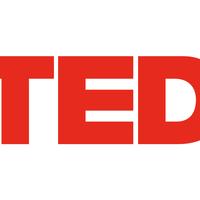Sebastian Thrun: Google's driverless car
As a boy, I loved cars.When I turned 18,I lost my best friend to a car accident. Like this. And then I decided I'd dedicate my life to saving one million people every year. Now I haven't succeeded, so this is just a progress report, but I'm here to tell you a little bit about self-driving cars.
I saw the concept first in the DARPA Grand Challenges where the U.S. government issued a prize to build a self-driving car that could navigate a desert. And even though a hundred teams were there, these cars went nowhere. So we decide at Stanford to build a different self-driving car.We built the hardware and the software.We made it learn from us,and we set it free in the desert. And the unimaginable happened: it became the first car to ever return from a DARPA Grand Challenge --winning Stanford 2 million dollars.Yet I still hadn't saved a single life.
Since, our work has focused on building driving cars that can drive anywhere by themselves --any street in California. We've driven 140,000 miles.Our cars have sensors by which they magically can see everything around them and make decisions about every aspect of driving. It's the perfect driving mechanism. We've driven in cities, like in San Francisco here. We've driven from San Francisco to Los Angeles on Highway 1.
We've encountered joggers, busy highways, toll booths, and this is without a person in the loop; the car just drives itself. In fact, while we drove 140,000 miles, people didn't even notice. Mountain roads, day and night, and even crooked Lombard Streetin San Francisco. (Laughter) Sometimes our cars get so crazy, they even do little stunts.
(Video) Man: Oh, my God.What? Second Man: It's driving itself.
Sebastian Thrun: Now I can't get my friend Harold back to life,but I can do something for all the people who died. Do you know that driving accidents are the number one cause of death for young people? And do you realize that almost all of those are due to human error and not machine error, and can therefore be prevented by machines?
Do you realize that we could change the capacity of highways by a factor of two or three if we didn't rely on human precision on staying in the lane --improve body position and therefore drive a little bit closer together on a little bit narrower lanes, and do away with all traffic jams on highways? Do you realize that you, TED users, spend an average of 52 minutes per day in traffic, wasting your time on your daily commute? You could regain this time.This is four billion hours wasted in this country alone. And it's 2.4 billion gallons of gasoline wasted.
Now I think there's a vision here, a new technology, and I'm really looking forward to a time when generations after us look back at us and say how ridiculous it was that humans were driving cars.
Thank you.
(Applause)

